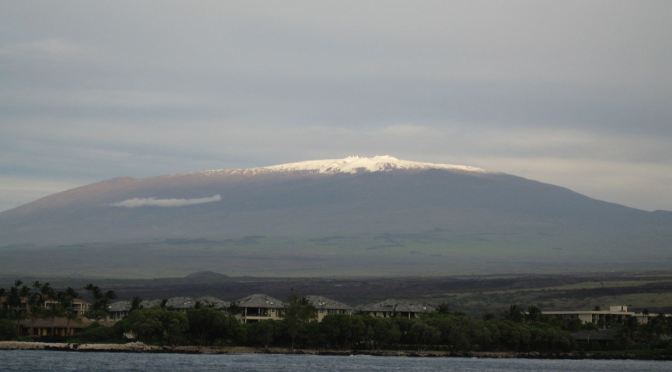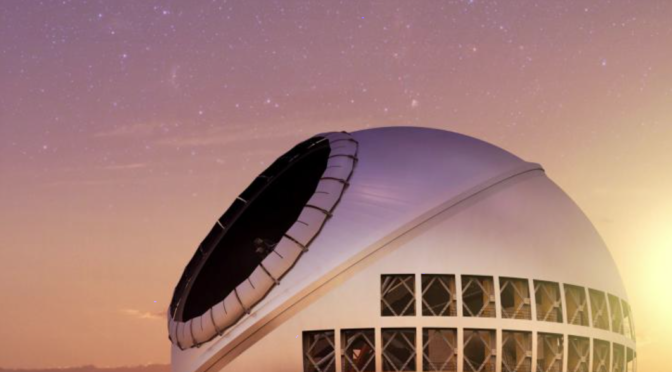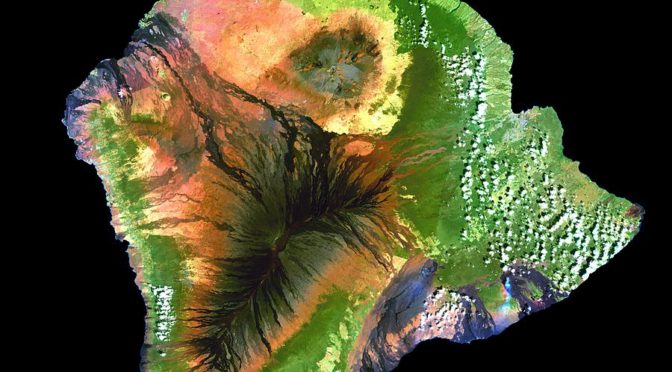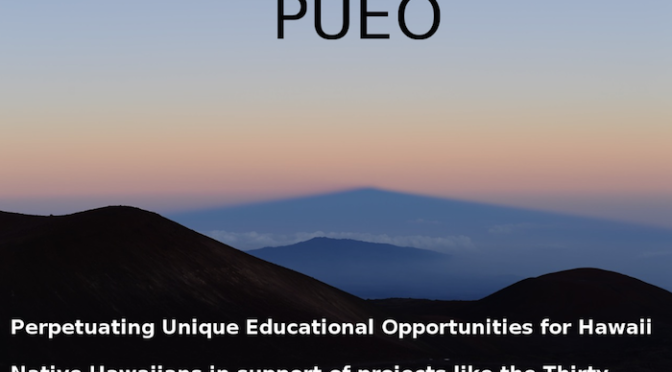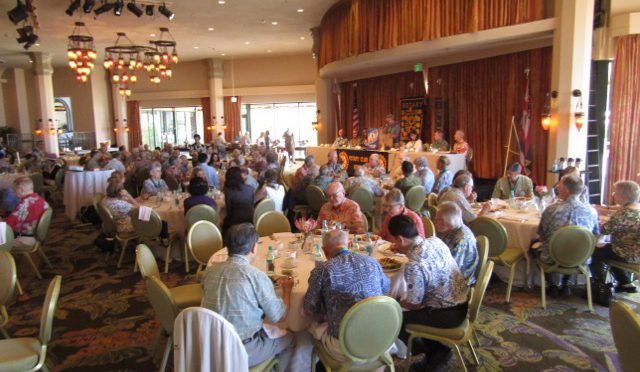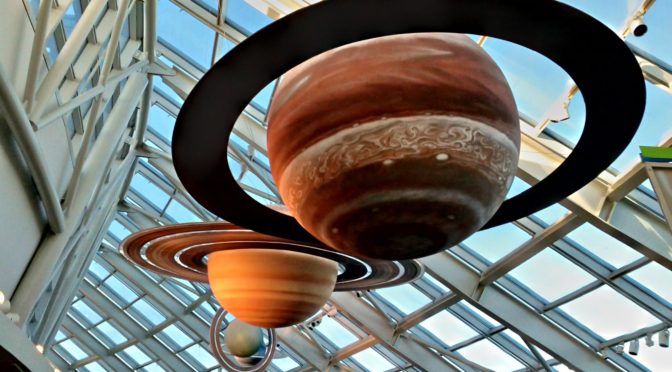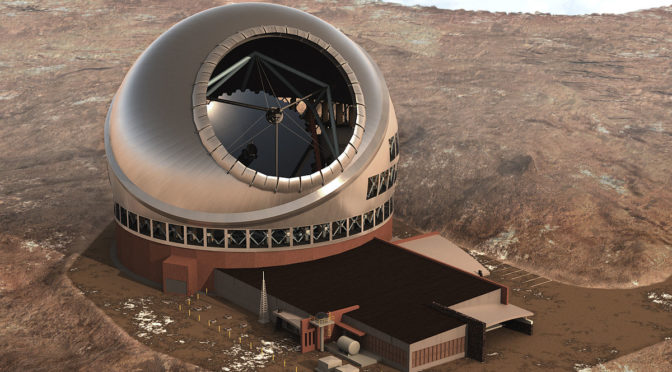Category Archives: Mauna Kea
New Video: Teach Them Well and Let Them Lead the Way
There is a Pipeline for Hawaiian Astronomers
Sunday’s Hawaii Tribune-Herald had an article about Hawaiian astronomers testifying in the Thirty Meter Telescope contested case hearing last week.
From the article Astronomers Make Their Case:
Native Hawaiian astronomer Paul Coleman says the Thirty Meter Telescope would not just help unlock the mysteries of the universe, but also provide him a link to his ancestors.
Coleman, along with fellow astronomer Heather Kaluna, were the last of TIO International Observatory’s witnesses called in its ongoing contested case hearing this past week.
I first met Heather Kaluna back in 2006 or 2007 when I was a Keaholoa STEM advisor at the University of Hawai‘i at Hilo. The Keaholoa STEM program aims to “increase enrollment, support, and graduation rates of Native Hawaiian students at UH-Hilo in science & mathematics disciplines, and increase familiarity and the use of related technology.”
When I spoke to the college students back then, I told them about starting the Adopt-a-Class program at Keaukaha Elementary School. That program raised money to send students on field trips to places like ‘Imiloa Astronomy Center that they wouldn’t otherwise be able to take.
Heather was in the Keaholoa program. After I spoke, she came up and asked me how she could donate money to help the kids at Keaukaha. She was a “starving college student” herself. I knew she should be spending her money on putting herself through school, not worrying about the kids at Keaukaha. It stuck with me.
She studied astronomy at UH-Hilo and then UH-Manoa. Now she’s a postdoctoral fellow at the Hawaii Institute of Geophysics and Paleontology. I saw her recently when she and I, along with Barry Taniguchi, ended up on the selection committee for the new Institute for Astronomy (IfA) director.
There is a pipeline of Hawaiians coming up in astronomy. Paul Coleman was the first native Hawaiian astronomer. Then came Heather, and behind her is Mailani Neal.
Students that want to be Hawaiian astronomers
I attended the 2015 Office of Hawaiian Affairs (OHA) hearing when OHA voted to rescind its support of the TMT. Mailani, then a high school student at Hawaii Preparatory Academy, told trustees, in tears, that she wanted to go into astronomy. Now she is on the mainland getting her degree and she will be an astronomer.
And I know of at least one more person who may be in the Hawaiian astronomer pipeline. On one of my last tours of the banana farm, there was a girl from Kamehameha Schools. It was a couple years ago and I think she may have been in eighth grade. She hung close to me and I thought maybe she wanted to go into farming.
But afterward she came up and told me, in a soft voice, that she wanted to be an astronomer.
I really regret that I didn’t follow up and connect her with Heather and Mailani. That I didn’t tell them, “Look, here’s another girl coming up the pipeline.” After the fact, I tried to find out who that young girl was but I wasn’t successful.
I’m so conscious of young people in elementary school, middle school, high school. They have aspirations you don’t know about, and they need help when they need help.
It’s like the story I just told here about my cousin Frank Kamahele. He was 11 years old when he knew he was going to be an airplane pilot. He didn’t know how, but he knew he would be. And he was.
It still bothers me that I didn’t connect that young girl with the others already on the path, and I’d still like to. That was maybe two years ago. If anyone knows who she is, please let me know.
Is the TMT Contested Case Hearing a Filibuster?
I’ve been keeping up with the Thirty Meter Telescope (TMT) contested case hearing that is now underway, and have watched most of it.
Sunday’s Star-Advertiser had a front page story on what’s currently happening with the hearing.
Testimony in the TMT contested case hearing started October 20, and there are still 80 more people to testify. This means that, at the current rate, the hearing could continue through the end of 2017. The paper reports it’s being called a “filibuster” by some.
I don’t think it will take that long, though. I say that for a couple reasons.
One is that most of the most important witnesses have already spoken. Another is that the judge has done a good job of letting the anti-TMT people know what they can and cannot do and what’s needlessly repetitious. The process is becoming more streamlined.
We who support building the TMT on Mauna Kea agree with much of what the opposition is saying. The culture must be accommodated.
We don’t want to be adversarial or to toss them out of the room; we just all want a seat at the table.
Our main difference is that for us it’s not “all or nothing.” The anti-TMT people are pretty much “all or nothing,” whereas we think there should be some compromise to accommodate education.
From the Star-Advertiser article:
Telescope hearing called a ‘filibuster’
By Kevin Dayton
November 27, 2016
HILO >> After nine days of exhaustive questioning of a half-dozen witnesses in a contested case hearing for the Thirty Meter Telescope, some TMT supporters are now privately describing the lengthy proceedings as a “filibuster” that will stall the project, and may even effectively block the $1.4 billion telescope from ever being built in Hawaii.
Testimony in the trial-like hearing for the proposed telescope began Oct. 20, and about 80 more witnesses are scheduled to testify. If the proceedings were to continue grinding along at their current pace of about six witnesses per month, the hearing would finally conclude sometime around the end of 2017,
Lawyers for the University of Hawaii complain the hearing so far has been characterized by “repetitive questions, attempts by cross-examiners to present their own testimony, and cross-examiners trying to argue with the witnesses and the hearings officer,” according to a recent UH filing.
But opponents of the TMT contend in a filing with the state Supreme Court that the hearing process has been so flawed that they have been “deprived once again of any meaningful participation and any meaningful opportunity to be heard” in the contested case. Read the rest
photo Courtesy TMT International Observatory
Making Life Better, Part 3: Why These Big Island Issues?
I want to talk about why I’m involved in all these different Big Island issues: Geothermal. The Thirty Meter Telescope. The Hawaii Island Energy Cooperative.
These are not random, unrelated concerns. They are all directly related to what’s happening in our world and on our island.
I am always working toward making our lives better here on the Big Island, and making this a better place for our children and grandchildren.
Everything came together for me when I started going to the Peak Oil conferences in 2007. That’s where I learned about Charlie Hall and his theory of Energy Return on Investment (EROI).
What was interesting to me about that his is a biophysical approach. A systems approach. It doesn’t put everything into its own silo, but instead takes everything into consideration all together.
EROI boils down to one basic concept: You have to have net energy to survive. This concept is discussed as an economic concept, but really it goes all way back to biology. Think about a rainbow trout swimming in a river and catching flies. At the end of the day, it has to have caught enough flies not only to survive but also to reproduce.
It’s the same for every animal. Look at cheetahs. They’ve got to be able to run down antelopes and rabbits and whatever they eat, and still have energy left over to reproduce and raise their kids.
It takes energy to get energy. We have to be able to get at our source of energy – like oil – and still have enough left over to power our society.
This concept applies to organisms, organizations and civilizations – everything.
How These Big Island Issues Apply
I’m no scientist. I’m a farmer who’s spent a lot of time out there on the farm, dealing with the physical stuff, out in the rain and the dirt. I come at this practically, always remembering my Pop’s lesson about, Not no can, can.
I am always trying to find a solution to something or other by thinking hard and planning ahead. When I went to school I learned there’s a name for this. It’s called “contingency planning.”
And it’s what we need to be doing now. Contingency planning. We need to take sustainable actions now to prepare for a better future.
What makes a solution sustainable? It has be economically, environmentally and socially sustainable.
As for the economic part, people understand what you need to do to make that work. Environmentally, too.
What is generally missing, and what I gravitate toward, is the social part of sustainability: leaving no one behind. I always come at everything from that point of view.
When we look at the Big Island, we have the lowest median family income, a homelessness problem and many other social problems. When I look at solutions, I want to make sure they address these problems.
Solutions
From what I see, education is the game changer. There are clear correlations between education and family income. And education and family income have a strong impact on the other problems. It’s not very complex.
The TMT brings $50 million to our island, earmarked solely for our kids’ education. And geothermal and the Hawaii Island Energy Cooperative bring smart energy solutions to our peak oil crisis.
I’ve been influenced by my Pop, who taught me to look long term. When you’re looking long term, you don’t have to make radical decisions you might regret later. When you focus on the long term, you can make gradual changes to get to where you want to go.
We need to have a sustainable energy situation, and that will help with everything else.
Pro TMT: Didn’t Just Fall Off the Tomato Truck
Through their former attorney Richard Naiwieha Wurdeman, some of those who feel the Thirty Meter Telescope should not be built atop Mauna Kea suggest I helped form the pro TMT group PUEO, short for Perpetuating Unique Educational Opportunities, on the spot – that we just popped up out of nowhere.
You can read that in this Civil Beat article about the TMT Contested Case Hearing, which starts Tuesday.
From Civil Beat:
Apart from the TMT itself, the only intervenor that has taken a stance in favor of the TMT’s construction is a group calling itself PUEO, short for Perpetuating Unique Educational Opportunities, Inc. As described in its petition for standing, PUEO’s purposes “include furthering ‘educational opportunities for the children of Hawaii in the fields of science, technology, engineering, and mathematics.’ Its board members and beneficiaries include native Hawaiians that reside in the Keaukaha-Panaewa Hawaiian Homesteads located in Hilo, Hawaii. PUEO’s board members include native Hawaiians who seek knowledge and understanding and exercise customary and traditional native Hawaiian rights on Mauna Kea.”
The original petitioners have objected strenuously to PUEO’s admission as an intervenor. In a memorandum opposing Amano’s decision to admit PUEO, the original petitioners’ attorney, Wurdeman, claims that PUEO was formed for the sole purpose of intervening in the case.
“[G]iven the timing of its formation, the P.U.E.O., Inc., was obviously formed solely to try and participate in the contested case hearing and the Petitioners submit that such an attempt is clearly improper,” Wurdeman wrote.
The Reality
The truth, of course, is that I have been a very vocal supporter of the Thirty Meter Telescope for many years.
For years I’ve written at my blog and elsewhere about the Adopt-A-Class program. We formed that program to help kids in schools that cannot afford field trips. The program, which expanded after awhile to cover every class on the Big Island, paid for buses and admission to send students to ‘Imiloa Astronomy Center once a year, where they learned about the world-class science on Mauna Kea as well as our traditional Hawaiian culture. My first of many posts about Adopt-A-Class was nine years ago, in 2007:
My friend Duane Kanuha and I have this big idea, and we’re asking for your help: We want to send Keaukaha students on excursions that broaden their horizons and help them develop excitement for learning and positive attitudes about their place in the world. It’s my opinion that if Hawaiian kids are comfortable with their place in the world, they will not hesitate to participate in that world.
I’m specifically thinking about excursions to Hilo’s new astronomy center ‘Imiloa. ‘Imiloa is particularly powerful because it situates the Hawaiian culture and scientific knowledge in parity with the highest level of astronomy. It is a “discovery center” that celebrates both science (the world-class astronomy atop nearby Mauna Kea) and Hawaiian culture (including the marvels of traditional Hawaiian voyaging, navigation and much more).
It’s a place where Hawaiian kids see that there are careers and avocations directly related to their culture, and that these cultural traditions are important enough that they are celebrated in a world-class museum. And that the people pursuing these careers and passions are people who look just like them and their families.
I’ve written about Kumu Lehua Veincent asking me “What about the rest?” (of the students) since at least 2009, and many times since:
What I keep coming back to again and again is what Kumu Lehua Veincent told me the first time I asked him what the TMT should offer the Big Island as an introductory, good faith gift. I asked him if it would be appropriate to ask for “full ride” scholarships for at least five native Hawaiians to attend the best colleges in the nation.
He asked me, in a very sincere way, “And what about the rest?”
I felt so stupid that I could feel my ears getting hot.
That is the essential question: “What about the rest?” This is about the keiki, the future generations—all of them.
Three years later, University of Hawai‘i President McClain has announced that if the TMT comes to Hawai‘i, in addition to its other negotiations there will be an annual, $1 million benefit package for education emphasizing K-12. It will be effective for the life of the project—50 years—and will begin as soon as all the permits are in place.
It will be set up to address Kumu Lehua’s question: “What about the rest?”
The Process
The first time I wrote about Patrick Kahawaiola‘a, and what I learned from him about how important the process is as we talk about TMT, was also in 2009:
We talked story in the community a lot, and over and over we heard from Patrick Kahawaiola‘a, President of the Keaukaha Community Association, that the most important thing was “the process.”
And as we thought about this, we realized that if the process is most important, then all contributors to the process, no matter what side of the issue they are on, made for a better product. And so we always need to aloha the loud voices, too, who early on told us that things were not quite right. It was about us. All of us. Not me against you.
So when we had our first sign waving in support of the TMT, nearly 150 people showed up. We told everyone that we were meeting to celebrate the process and told them to bring their kids, and they did. It was very significant.
I also wrote about it six years ago in this 2010 post:
As we went around visiting people, Patrick Kahawaiola‘a, president of the Keaukaha Community Association, told me that it’s about “the process.” And since the process would result in the best possible result, we need to aloha everyone who participates in the process, no matter which side of the issue they are on. Therefore, we must mahalo Kealoha, Nelson, Debbie, Paul, Ku, Hanalei, the Kanaka Council, Jim, Cory, Moani and many others. We would not be here today had it not been for their passionate advocacy.
The whole state has noticed that we on the Big Island are doing this differently. Our approach is based on mutual respect, collaboration and trust. The TMT folks, led by Henry Yang, did it the right way. It would not have worked any other way.
And I’ve been writing about the TMT’s money for education, which became the THINK Fund, many times since 2009:
If we teach our keiki the values they need to make a society that is successful and thriving “when the boat no come,” we will have done our jobs. This $1 million that will be dedicated to keiki education annually is key to the survival of future generations. It is no longer about us – it is about the future generations.
We must learn and perpetuate what it was that allowed Hawaiians to survive for hundreds of years out in the middle of the ocean without boats coming in every day with goods from someplace else.
In the future, our values will need to revolve around aloha. We will need to assume responsibility—kuleana. We need to make more friends and stay closer to our families.
We live in the modern world, so how do we use what we have and meld it with the values that worked? We need to have a balance of science and culture in order for all of us to do what we do to help our greater society.
My Pop told me: “There are a thousand reasons why ‘No can.’ I only looking for one reason why ‘Can.’”
What it really all boils down to, as I wrote above, is the process. In the last six years or more, I’ve spoken and written about how it’s all about the process many, many times. If the process is pono, and we aloha everyone on all sides of the issue, then we’re good.
Let’s proceed with the process.
PUEO to Rotary: TMT Offers Educational Opportunities We Shouldn’t Miss
Keahi Warfield, president of the native Hawaiian group Perpetuating Unique Education Opportunities (PUEO), spoke at the Rotary Club of Honolulu Tuesday. He said the Thirty Meter Telescope (TMT) offers educational opportunities we shouldn’t pass up.
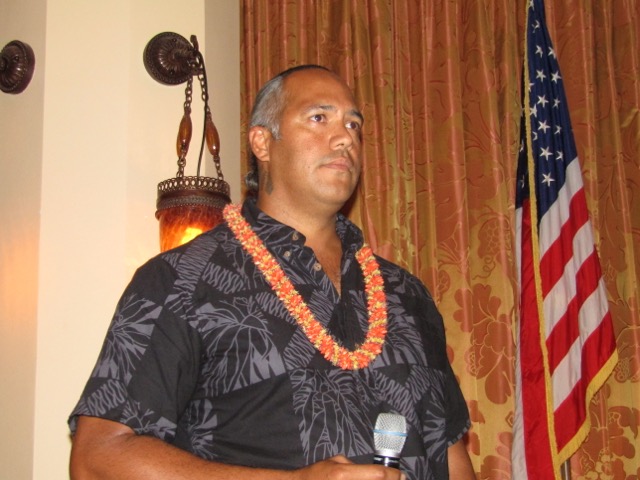
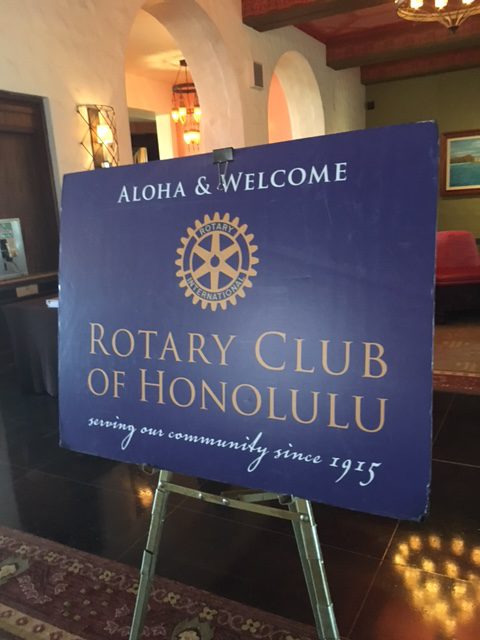
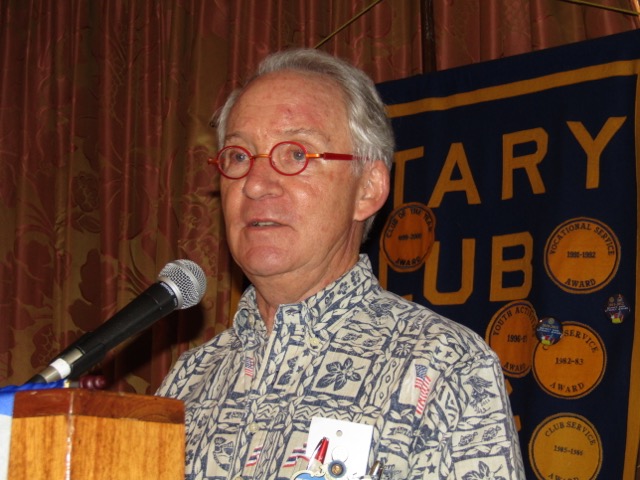
From the Honolulu Star-Advertiser:
Pro-telescope group touts educational benefits
By Jennifer Sinco Kelleher, Associated Press
August 17, 2016
Building a giant telescope atop Mauna Kea will come with educational opportunities that Hawaii shouldn’t close the door to, the president of a Native Hawaiian group that supports the project said.
Perpetuating Unique Educational Opportunities President Keahi Warfield told a Waikiki hotel banquet room filled with members of the Rotary Club of Honolulu on Tuesday that he believes there’s a “silent majority” of the public who support the Thirty Meter Telescope….
And I strongly agree – both that the TMT has educational opportunities for our Big Island keiki that we cannot pass up, and about the “silent majority” in favor of the project.
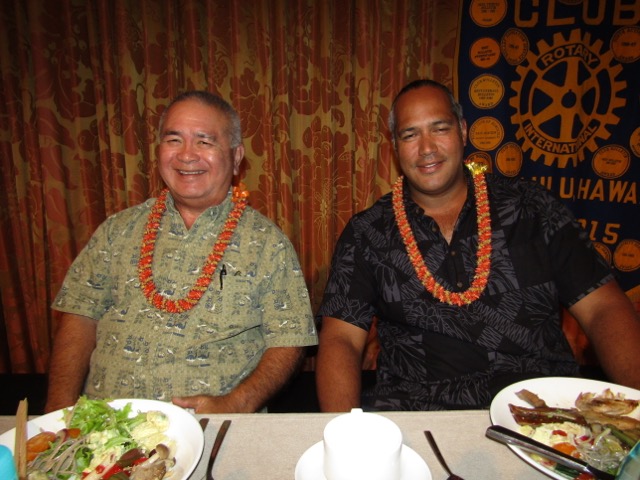
I introduced Keahi before he spoke and here’s what I said:
Who are we? I’m from the Kamahele family in lower Puna. My great-great grandfather had 12 boys and one daughter. All the Kamaheles are related.
I’ve been farming for 30 years. Our farm is Hamakua Springs, which is on 600 fee-simple acres. I describe us as being a triple bottom-line farmer. To be sustainable we need to be socially, environmentally and economically sustainable. The “social” aspect includes culture and education. It includes all of us, not just a few of us. This is the part I am especially focused on.
The County of Hawaii has the lowest median family income, and the highest suicide and homelessness rates. The game changer is education. It’s not the largest, strongest or the smartest that survives – it’s the ones who can adapt to change.
The pluses have to exceed the minuses or you go extinct. That applies to organisms and organizations as well as civilizations.
Education is the game changer that allows us to adapt.
Regarding the TMT: Henry Yang is the president of the TMT. And he’s the type of person you can do business with on a handshake. He and Jean-Lou Chameau, the former president of Cal Tech and now president of the King Abdullah University of Science and Technology in Saudi Arabia, visited the Big Island 15 times. They became well known in the community.
One visit to Keaukaha was memorable. They dropped in unexpectedly at a Kupuna Day function. They had become so familiar that the people greeted them with, “Come, come, come, go eat.”
Keiki education is the common denominator that everyone on all sides of the issue can agree upon. That’s how the THINK fund was born. The THINK Fund is a one million annual contribution to Big Island student education from the Thirty Meter Telescope. They left it to the community to choose the direction.
I’ve been in the middle of this issue for nearly ten years, and I am very pleased that PUEO has taken a seat at the table.
I have noticed in the last few months that public opinion is shifting. In the Ward Research poll just released, the number opposed to the TMT has gone down from 39 percent to 31 percent. I have a Facebook page that talks about ag and energy and I’ve noticed many more Hawaiian surname “likes,” compared to just three months ago. I also notice more young people participating. This is the most encouraging part to me.
My role now is support. I can see the young people starting to come out and I could not be more pleased.
The PUEO group is made up of very credible native Hawaiian people. In all my years of knowing them, they only talk about the community, the keiki, and future generations. I am very proud to be allowed to work with these people.
Keahi is the perfect leader for PUEO. I’ll do everything I can to support his efforts. Aloha
IfA Director Insists on Strong Hilo Astronomy Program
Guenther Hasinger, director of the Institute for Astronomy (IfA), really impresses me.
I first met him when I sat on the selection committee for the new IfA director. On that committee, I was looking for someone who would understand us here on the Big Island, and who would advocate for the University of Hawai‘i at Hilo astronomy department.
Hasinger just announced that undergraduate students at the University of Hawai‘i at Hilo (UHH) will get viewing time at Mauna Kea observatories for the first time, up to 16 nights per year.
You can read more about this in Saturday’s Hawaii Tribune-Herald:
Guenther Hasinger, IfA director, said it’s unusual for an undergraduate astronomy program to be granted dedicated viewing time. Typically, observing time is reserved based solely on the caliber of research.
But few programs sit at the bottom of one of the world’s top telescope sites.
“From my point of view, it is absolutely necessary to have a very strong astronomy program in Hilo,” Hasinger said.
“We want to ground the telescopes in the community.”
Accomplishments
He impresses me for several reasons.
First of all, he was scientific director at the Max Planck Institute for Plasma Physics near Munich, and received numerous awards for his research and contributions to space science. These include Germany’s most significant research prize and the international Committee on Space Research award.
Also, he wrote a book called Das Schicksal des Universums (Fate of the Universe), which explains astrophysics and cosmology to a wide audience. It won the Science Book of the Year award in Germany and was popular in Europe. I asked him how he did it. How does an astronomer write a book that’s popular with the general public? He told me he can relate to the average person. Right there I thought, “This is the guy for the IfA.”
And furthermore, before he applied for the IfA position, he went to a ceremony at Halema‘uma‘u to show respect. He didn’t talk about it in his official presentation; we had to drag it out of him.
Historically, the IfA is O‘ahu-centric. And here on the Big Island, we’ve always had to fight for anything we get. With Dr. Hasinger, we have someone who is respectful of the Big Island.
Hasinger advocates for growing the UH-Hilo Astronomy department.
“From my point of view, it is absolutely necessary to have a very strong astronomy program in Hilo,” he said in the Hawai‘i Tribune-Herald article.
Read the University of Hawai‘i Memo of Understanding about this change here:
Judge Grants PUEO Right in Telescope Hearing
Retired Judge Riki May Amano has allowed 20 individuals and groups, including PUEO, to become parties in the upcoming Thirty Meter Telescope (TMT) contested case hearing.
PUEO stands for Perpetuating Unique Educational Opportunities. It’s a non-profit we formed that is dedicated to enhancing the educational opportunities of Hawaii’s youth.
Here’s a Hawaii Tribune-Herald article about Judge Amano’s decision.
PUEO
Our group felt compelled to participate because of the decision’s impact on future generations. We also want the discussions to include keiki education.
This is great news. Allowing everyone in will result in a more robust and better-rounded discussion of the issues.
Background
The contested case hearing results from a Hawaii Supreme Court ruling on the TMT’s 2011 conservation district use permit. The court ruled the Board of Land and Natural Resources should not have approved the permit before hearing all evidence.
VIDEO: Why I Support Thirty Meter Telescope
I hope you’ll watch this short video. It’s about why I support building the Thirty Meter Telescope (TMT) on Mauna Kea.
We formed the non-profit group PUEO to support education – primarily, but not exclusively, for native Hawaiians. It was formed for the very long run.
On video, I talk about how I became aware of rising oil costs and how much we rely here on oil. We are so dependent on tourism. I thought about how we had better diversify our economy.
There is a direct relationship between education and family income. This is why we push education. And the TMT is already helping with it.
There’s a time we need to stand up for what’s right and be counted. And it’s not an adverserial situation. We just want our voices heard. Why can’t we have both cultural respect as well as taking care of the folks on the lowest rung of the economic ladder?
TMT photo courtesy TMT International Observatory

